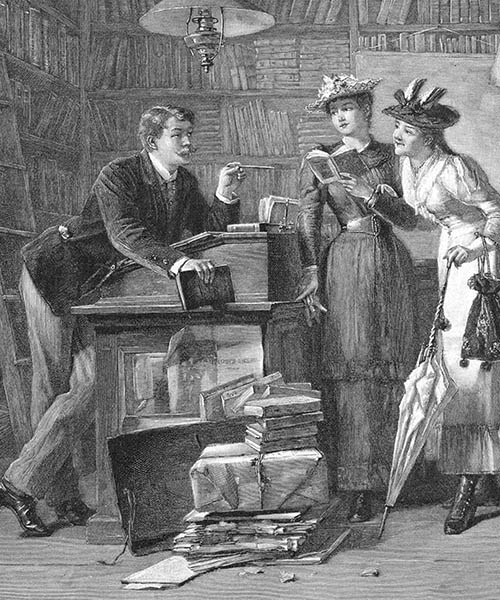Lending libraries
Everyone wants to read now. The learned and the unlearned, merchants, tradespeople, economists, soldiers, old and young, males and females seek to fill a part with reading ... even wardrobe attendants, coachmen and outriders not excepted.
Hannoversches Magazin, 1782
Lending libraries were commercial enterprises that loaned out books for a fee. The rising demand for reading materials beginning in the 18th century led to the establishment of such institutions spreading popular literature in almost every German city. In the 19th century, the lending libraries increasingly specialised in fiction and thereby continually aroused the suspicion of the censors. The lending institutions bought three-quarters of novel production; they also offered foreign language books, recent translations produced in “translation factories”. Authors such as August Lafontaine, Walter Scott and August von Kotzebue topped the lending lists.
Besides lending libraries, there were also circulating libraries, reading rooms and reading societies, which served to promote the common use and discussion of reading materials.

